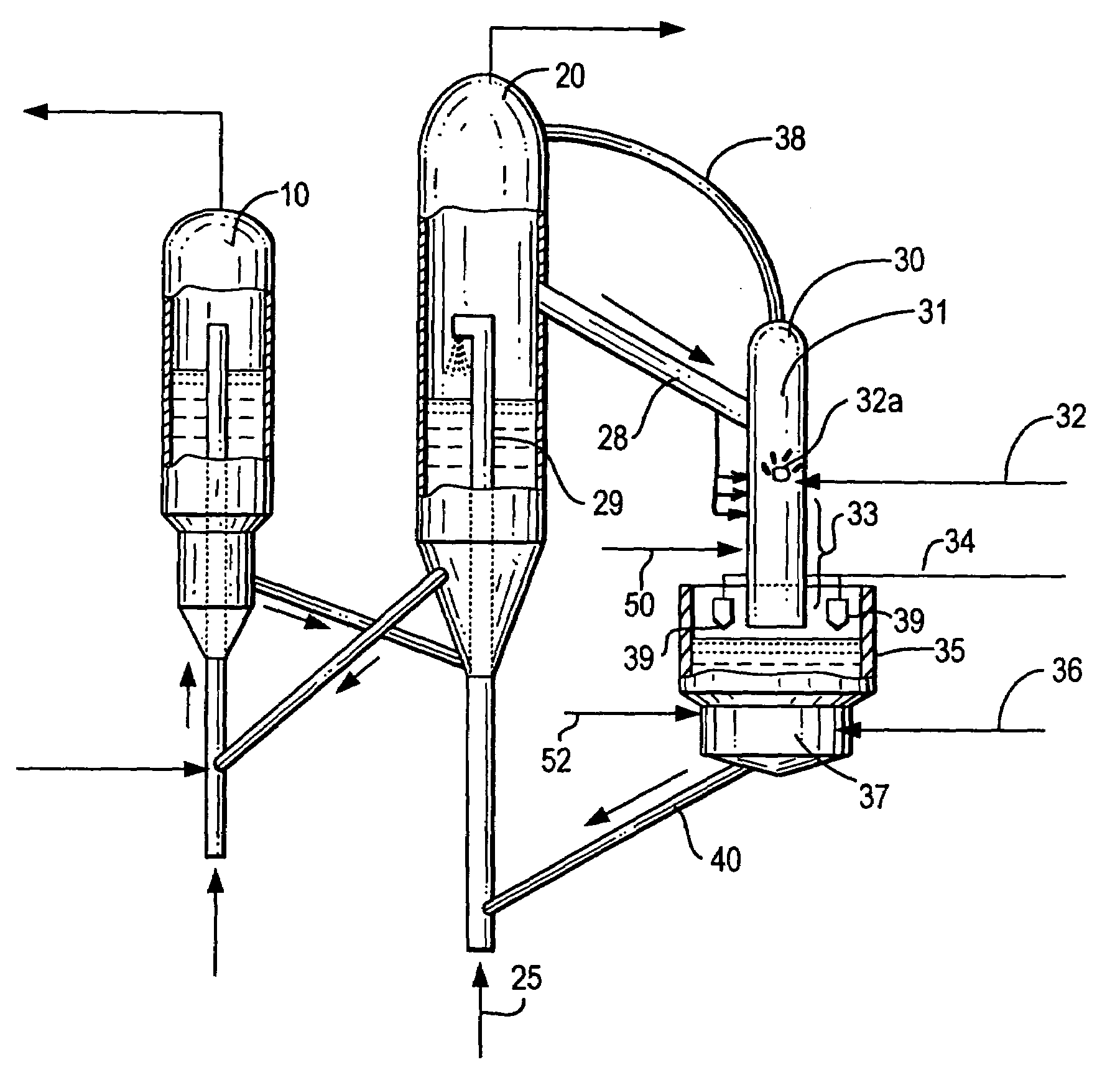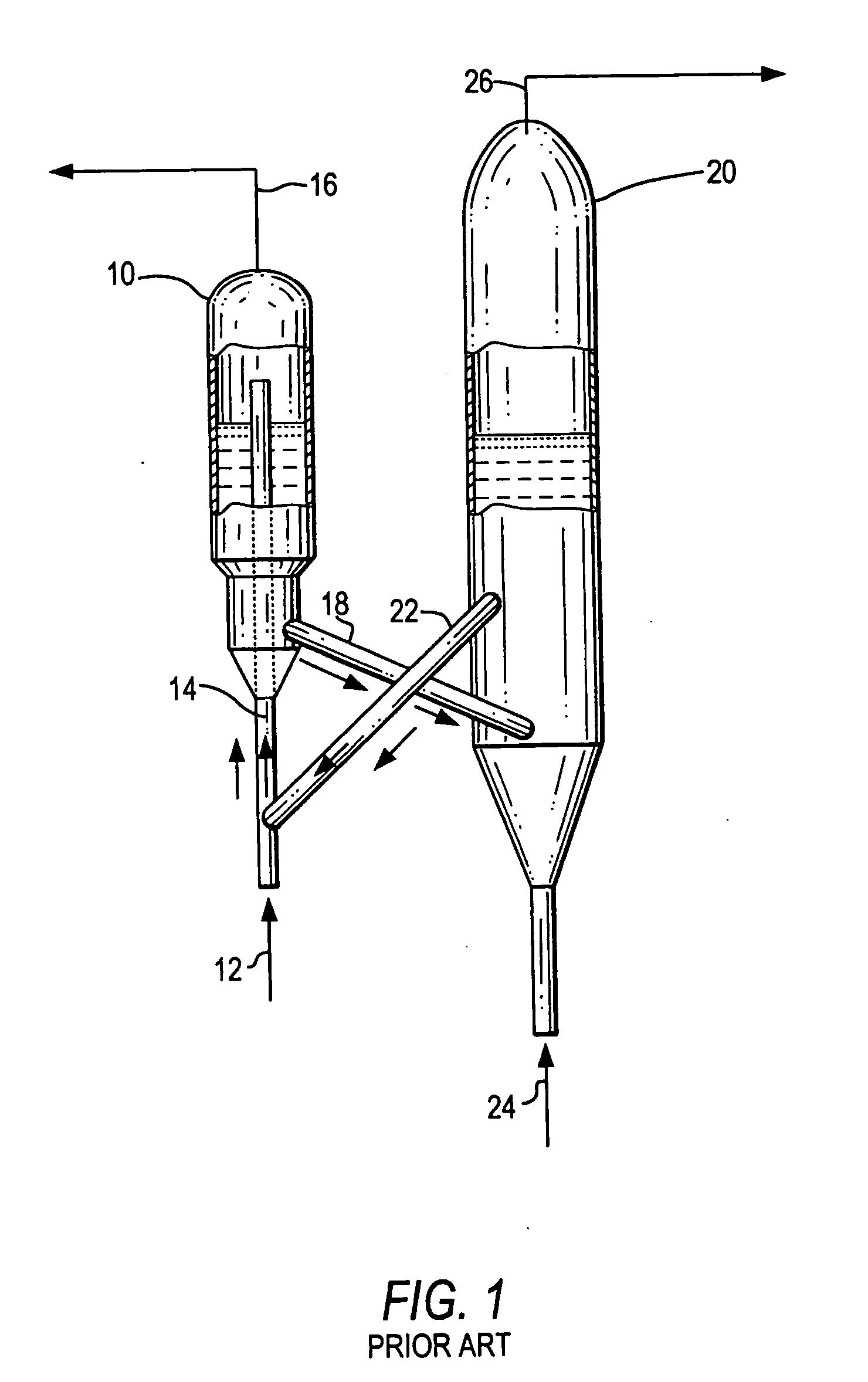Ancillary cracking of heavy oils in conjuction with FCC unit operations
a technology of ancillary cracking and heavy oil, which is applied in the direction of hydrocarbon oil treatment, catalytic cracking, hydrocarbon oil treatment, etc., can solve the problems that the disclosure of light olefins cannot solve the problem of enhancing the production of light olefins, and cannot meet the foreseeable future growth in the demand for propylene, etc., and achieves efficient cracking
- Summary
- Abstract
- Description
- Claims
- Application Information
AI Technical Summary
Benefits of technology
Problems solved by technology
Method used
Image
Examples
Embodiment Construction
[0037]As indicated above, the method and apparatus of the present invention can be employed with any number of FCC process units known to the prior art. With reference to FIG. 1, a typical prior art FCC process is schematically illustrated. The reactor vessel (10) receives the hydrocarbon, or oil, feedstock (12) that is admitted into the lower end of reactor riser (14) where it is mixed with fresh and / or regenerated catalyst that is transferred by a conduit (22). For the purpose of this simplified schematic illustration and description, the numerous valves, temperature sensors, electronic controllers and the like that are customarily employed and well known to those of ordinary skill in the art are not included in order to focus on the principal features of the present invention.
[0038]In this continuous process, the mixture of catalyst and FCC reactor feedstream proceed upward through the riser into a reaction zone in which the temperature, pressure and residence time are controlled...
PUM
| Property | Measurement | Unit |
|---|---|---|
| operating temperature | aaaaa | aaaaa |
| residence time | aaaaa | aaaaa |
| temperature | aaaaa | aaaaa |
Abstract
Description
Claims
Application Information
 Login to View More
Login to View More - R&D
- Intellectual Property
- Life Sciences
- Materials
- Tech Scout
- Unparalleled Data Quality
- Higher Quality Content
- 60% Fewer Hallucinations
Browse by: Latest US Patents, China's latest patents, Technical Efficacy Thesaurus, Application Domain, Technology Topic, Popular Technical Reports.
© 2025 PatSnap. All rights reserved.Legal|Privacy policy|Modern Slavery Act Transparency Statement|Sitemap|About US| Contact US: help@patsnap.com



